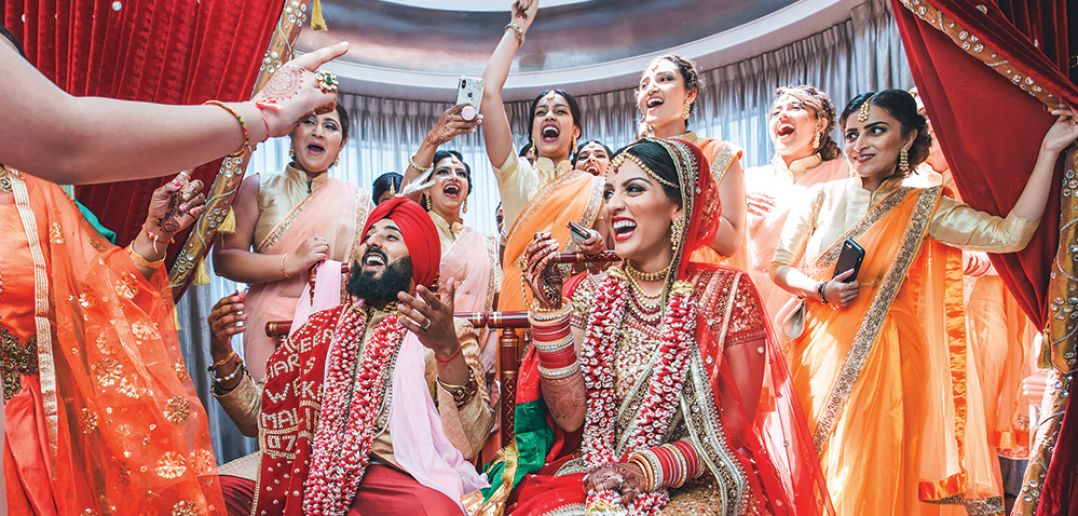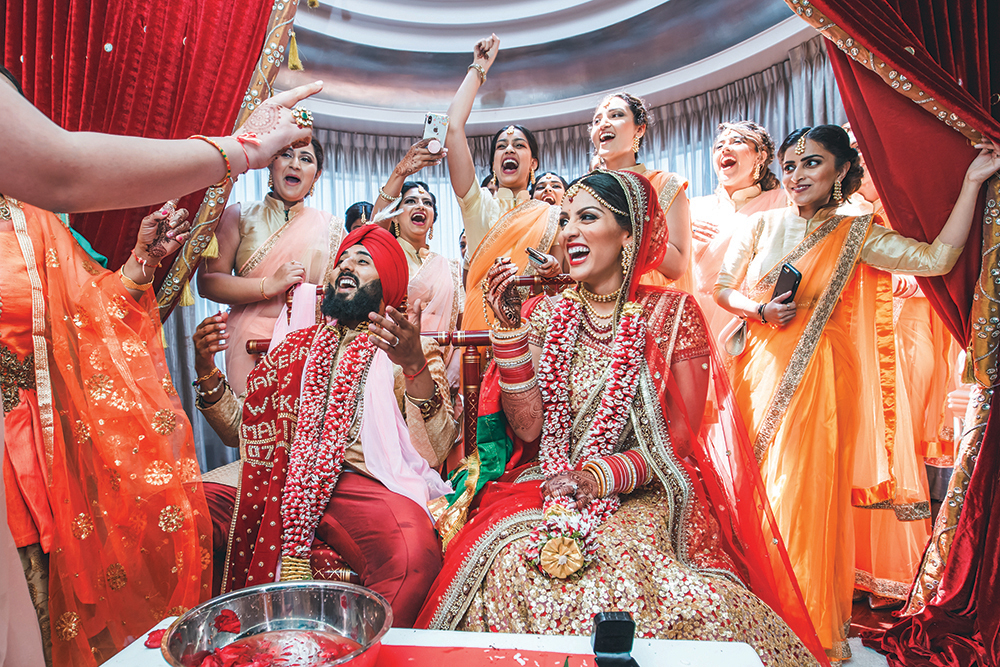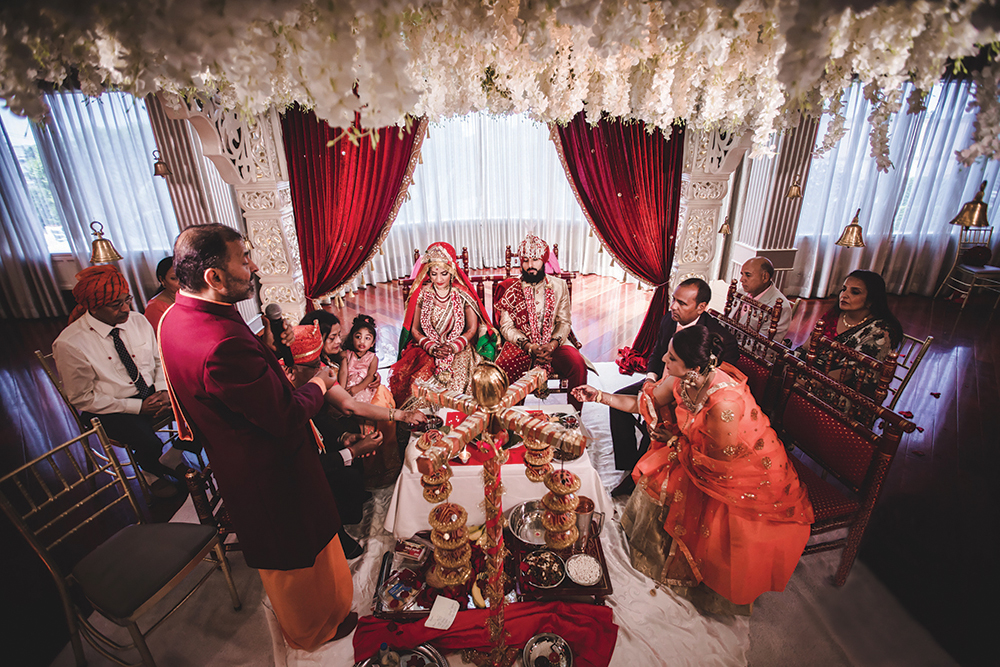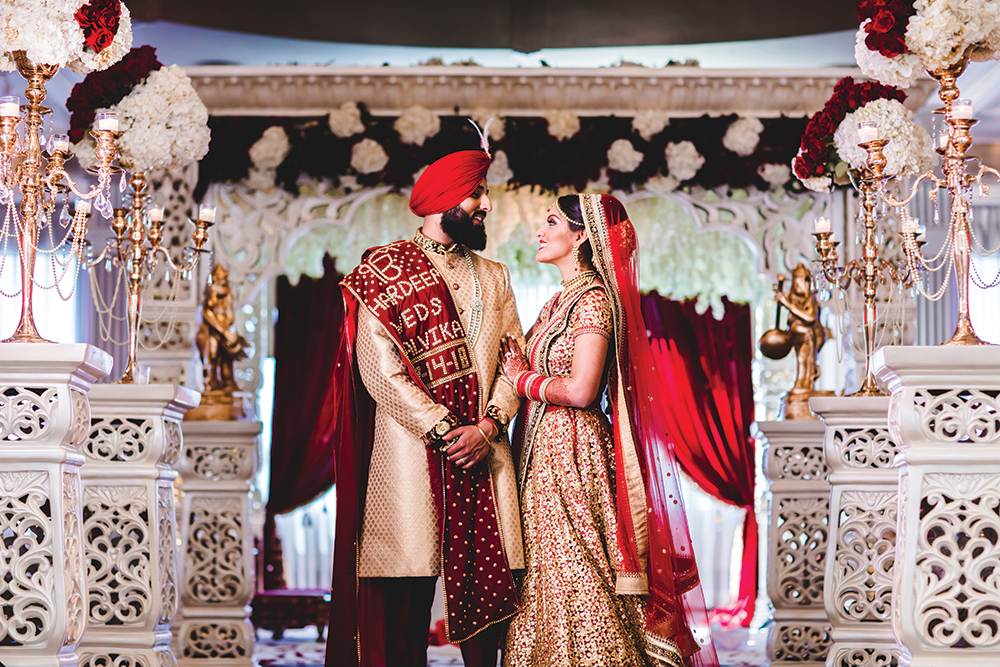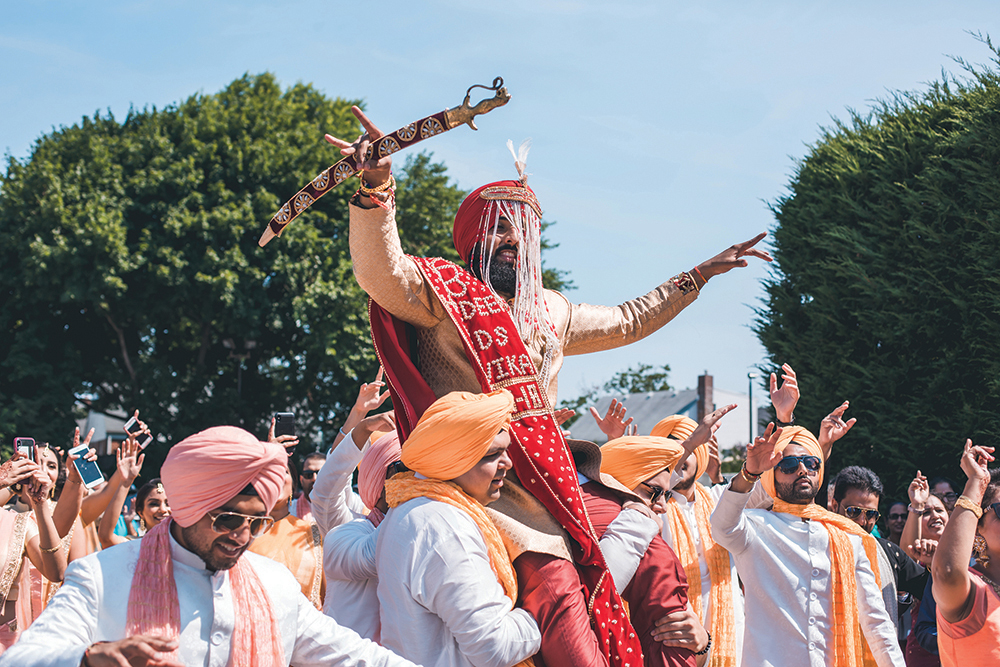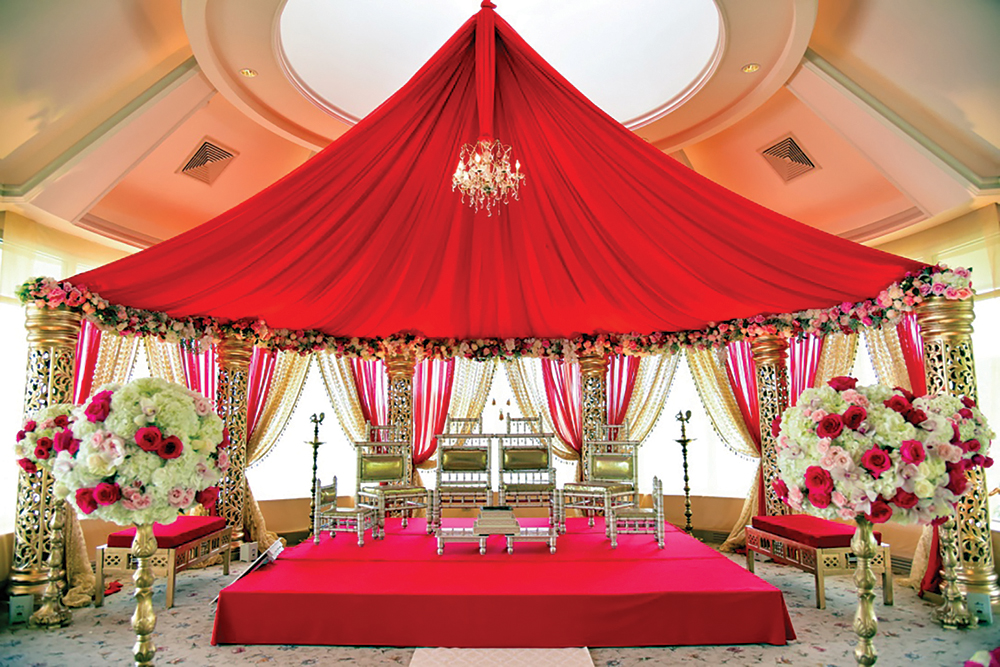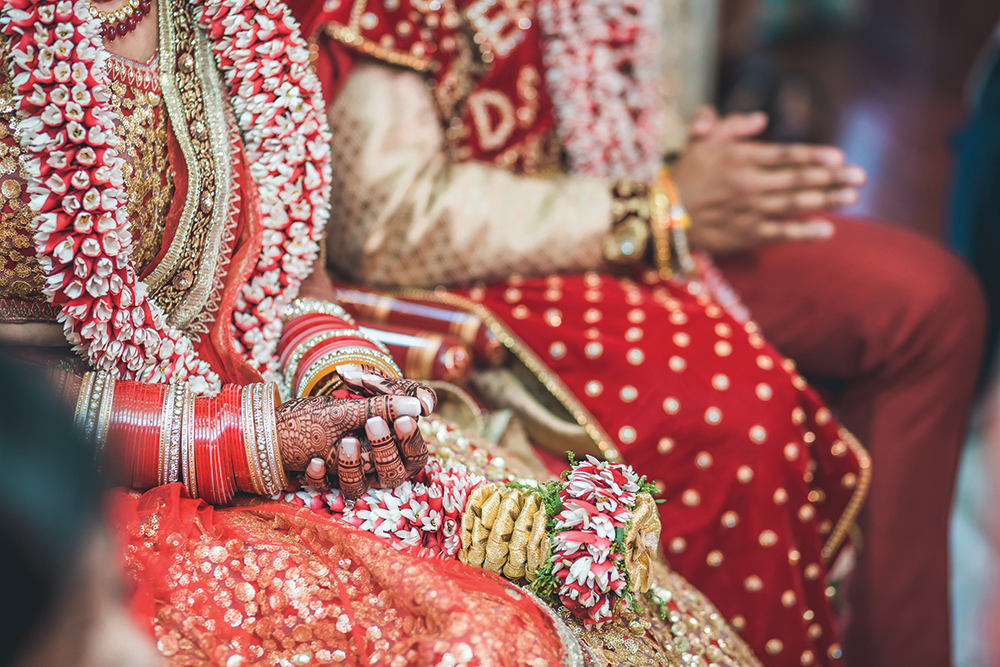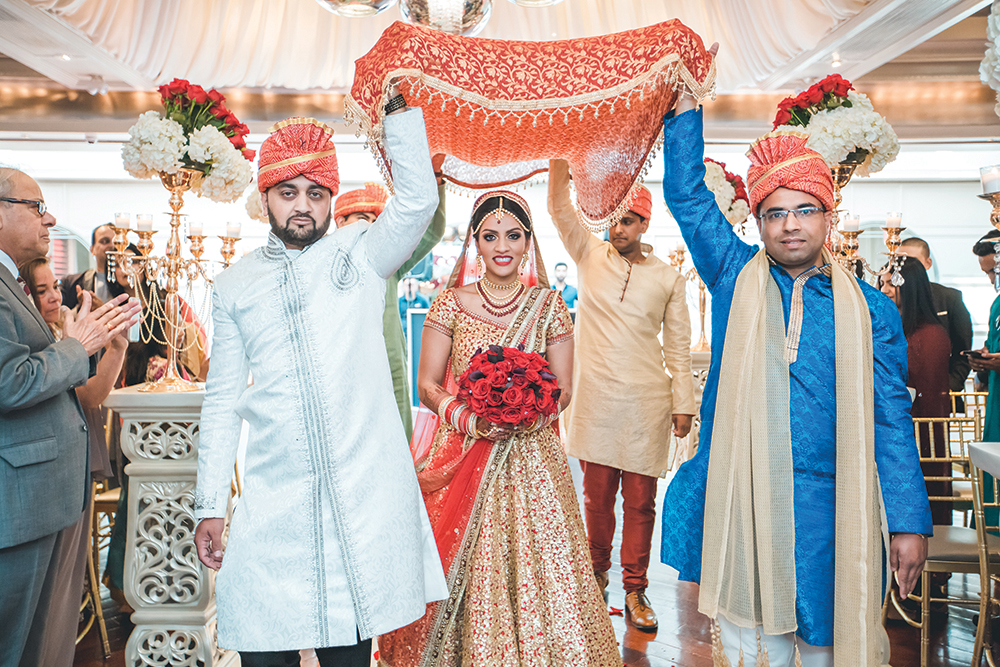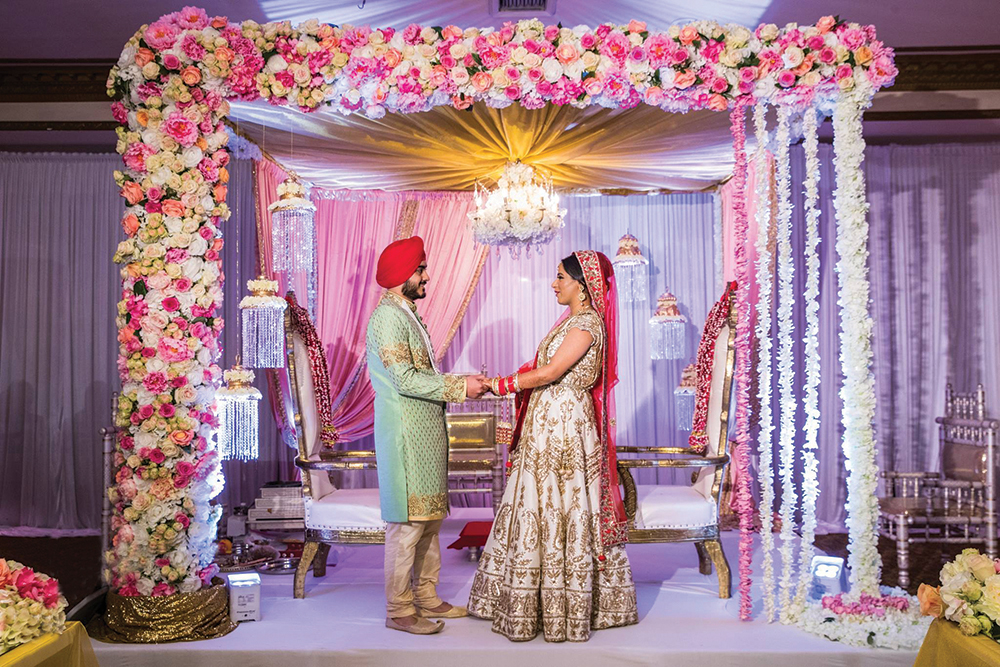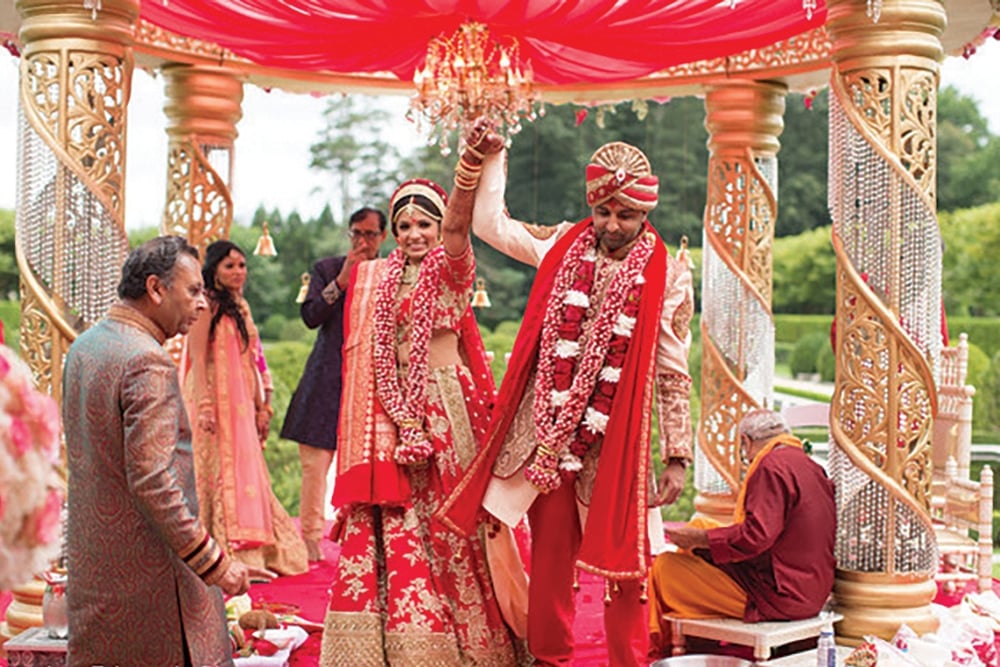Traditions | The Indian Wedding
With over 500 languages and 6,000 dialects, the diverse cultures and religions of India shape today’s wedding ceremonies, and so Indian weddings vary based on their region of origin. Many different rituals that are part of an Indian wedding ceremony also can take place over several days.
For venues especially adept at hosting Indian Weddings, see ...
Castles & Estates ... Venues with Garden Settings
Historic Locations ... Hotels
As one of the world’s most religiously and ethnically diverse lands, India boasts unique, culturally rich wedding ceremonies that run from elegant and sophisticated to beautifully intricate. Part of the complexity stems from the concept that when an Indian couple marries, entire families and communities are involved.
“Indian weddings have traditionally been considered a marriage of two families, rather than just a marriage of the bride and groom.” says Sunita Sadhnani of Glamorous Event Planners & Productions, a wedding and event-planning firm based in Long Island. “The wedding can be anywhere from three days to one week long and typically includes several events.
“The engagement is the first of many steps in what tends to be a lengthy process, and serves as the agreement between the families of the future bride and groom. At this stage, the wedding date is also set. The wedding rituals themselves begin 15 days before the wedding, with Barni Band-hwana, where a piece of thread, called Mauli, is tied to the hands of both the groom and his parents to humbly request a safe wedding day from the gods.
The next step is Mayara, the “Maternal Uncle’s Ceremony.” He brings gifts for the mothers of both the bride and the groom, including the dresses they will wear at the wedding.
The traditional Indian wedding itself is a ritual of three separate events: the Sangeet and Mehendi, the ceremony, and the reception celebration.”
Sangeet & Mehendi
“Sangeet is a chance for relatives and friends of both the bride and the groom to get together,” Sunita continues. “They play instruments, dance, sing, and interact with each other. Sometimes they even poke fun at the bride and groom.” The party is hosted by the bride’s family and is also a time for introducing members of the families to each other.
At the Sangeet, an Indian bride takes part in a Mehendi ceremony, during which she and her female family members and friends gather for henna. “In the traditional Mehendi ritual,” says Sunita, “two or three women are hired to do the actual designs for the bride and her female guests. The artists create intricate designs on the hands or feet of the bride and her friends and family, using a paste of dried ground henna leaves. The henna is believed to ward off evil, promote fertility, and attract good energy for the soon-to-be wedded couple.”
The names of both the bride and the groom are “hidden” in the bride’s artwork and the groom is meant to find the names. There is also a saying that the deeper the color of the henna, the stronger the bond between husband and wife and the better the bride will get along with her mother-in-law. “So brides often let the henna dry for up to eight hours!”
The Wedding Procession
In most Indian wedding celebrations, the day begins with the groom’s procession, as his entire family and friends all lead him to the wedding altar.
“This is called the Baraat,” says Sunita. “This ‘ceremony within a ceremony’ is where the groom, riding on a white horse, makes his grand entrance. He is ushered in by a long line of his family and friends, who are all singing, dancing, and shouting out traditional Indian well wishes.” It is a rousing spectacle!
“After that,” continues Sunita, “the bride and her family greet the groom and the couple exchange Milni Malas, floral garlands, to wear around their necks. These symbolize their acceptance of one another.”
In the Baraat, the groom is dressed in a long jacket called a Sherwani and fitted trousers called Churidars. He wears a Safa, a turban, on his head, with a big fancy brooch called Kalgi pinned onto it.
The bride’s parents and family, including uncles and aunts, all welcome the groom and his entire family. Then they escort the groom and his immediate family to their place of honor at the altar.
The Ceremony Under the Mandap
Hindu weddings take place outside under a canopy known as a Mandap, but if the Mandap cannot be placed outdoors, it is built inside. Each of the four pillars of the bridal canopy represents one of the four parents.
Both sets of parents and any siblings stand up at the Mandap during the ceremony. Since the father is already at the altar, it is often the bride’s maternal uncle who escorts her down the aisle. The bride’s brother also plays a role in the ceremony. He places rice in the hands of the bride and groom, and they, in turn, throw it into the ceremonial fire pit.
“The officiant, bride, groom, and bride’s parents sit beneath the Mandap,” says Sunita, who describes the Mandap as beautifully decorated towers or pipes enhanced with curtains, fabric, and flowers.
Front and center under the Mandap is the sacred fire. The fire can be small and confined to a brazier or dish for safety. “Agni,” the god of fire, is said to sustain life and thus gives life to the marriage.
“The ceremony starts off with the bride’s parents giving away the bride in a ritual called Kanya Daan.” says Sunita. “The bride and groom then join hands and circle around the enclosed fire in a ritual called the Mangalphera, the walk around the fire.”
The bride and groom walk around the fire four times, with each turn representing a major goal in life: Dharma, morality; Artha, prosperity; Kama, personal gratification; and Moksha, spirituality.
As they perform the Mangalphera, the Pandit, who chants verses during the ceremony, ties them together. “Once they finish their walk around the fire, says Sunita, “the couple rush to their seats, since it is said that whoever sits down first will be the dominant one in the marriage.”
In another ritual, the priest takes the scarves the bride and groom are wearing and ties them together before walking them around the fire. They all are given a mix of flowers, rice, and herbs to offer to the holy fire, which is in the center of the mandap to complete the prayers. This practice is called Havan.
“Seven steps are taken as they vow to support each other and live happily together,” says Sunita. “This is the Saptapadi.” Each step represents a marital vow, a promise to be committed to each other and to take care of each other. The priest offers blessings for an abundance of food, prosperity, eternal happiness, children, harmony, and friendship.
“Finally,” says Sunita, “the groom will apply a red powder to the center of the bride’s forehead and tie a necklace made of gold and black beads, and sometimes diamonds as well, around her neck, symbolizing that she’s now a married woman.” This is called the Mangalsutra, the groom’s gift to the bride.
For happiness and prosperity, friends and families also throw flowers after the couple is married.
Wedding Fashions
“Bride and groom attire is not what you see here in America,” says Sunita. “Here, black tuxedos and white dresses are the norm. Indian brides and grooms instead wear bright, vibrant colors and are usually decked out in gold jewelry. Jewelry will also adorn a bride’s head and face. Not just one dress will do for an Indian bride,” continues Sunita. “At least three or four dresses are worn for all the different rituals involved.”
On their wedding day, many Indian brides wears a traditional red sari, since red represents happiness and good luck. The traditional red sari is a six-foot fabric draped in a specific way and adorned with crystals and real 24-karat gold thread. White is avoided since it’s a color reserved for mourning. Then the bride will change into a different sari for the reception.
Indian brides typically mix red or pink with gold. Their wedding garment is called a Lehenga, which is a long skirt with a matching top and scarf. After the ceremony, they also change into a different Lehenga.
The groom wears a Kafni, a long shirt extending to the knees, with Pijamo, leggings. The groom might also wear a turban.
“Traditionally, Indian weddings do not include bridesmaids, groomsmen, flower girls, or ring bearers,” says Sunita. “But now some couples are adding American traditions and including a wedding party, maid of honor, and best man.” The bridesmaids typically wear Indian saris of the same color or pattern.
The Reception Feast
An Indian wedding menu is often served buffet style, since many items involve a gravy sauce or “Makhani” and would be difficult to serve pre-plated. A typical menu might feature seven to 10 appetizers followed by four or five main entrées, plus rice, yogurt, salad, and naan, a type of bread.
At the end of the meal, a wide variety of Indian cookies and sweets are served, such as silver-wrapped cashews, kaju, which is a fig-filled cookie, halva, and others made from heavy cream, cheese, and nuts.
Parents and friends also make spec ial toasts, like at most other weddings. “Similar to American receptions,” says Sunita, “there also is the DJ, photographer, cinematographer, flowers, food, cake, favors, and guests, but all on a much grander scale.
ial toasts, like at most other weddings. “Similar to American receptions,” says Sunita, “there also is the DJ, photographer, cinematographer, flowers, food, cake, favors, and guests, but all on a much grander scale.
“Anywhere from 300 to 500 people are usually invited to a typical Indian reception,” Sunita continues. “To them, it’s a celebration with family and friends and the people within their society.
“The food never ends!” exclaims Sunita. “Once the buffet is opened, it’s replenished all night, as are the desserts.
“The grander scale also is apparent in the way the bride and groom are showcased at the reception,” says Sunita. “In America, we often see a bride and groom sitting at a sweetheart table, sometimes with their respective bridal party sitting to the right and left of them.”
But instead, Sunita tells us, “Indian couples are typically seated on a raised stage, which is beautifully decorated.” Elaborate structures, backdrops, drapes, fabric, flowers, and candles are all involved in bringing attention to the special couple. “It’s a photo op, if you will,” Sunita continues, “for all the inportant pictures that will last a lifetime!”
Another special ritual occurs during the reception. At some point when the couple is dancing, family and friends throw money at the bridal couple to wish them prosperity.
The Bou Bhat takes place on the afternoon following the wedding day. The groom’s family and friends are invited for lunch, and the close relatives of the bride are also invited. At this event, the bride is formally invited into the family, the groom pledges responsibility for her food and clothing, and as a sign of fulfilling that pledge, he gives her a new sari and serves her food.
Blessings: The Aashirwad
Some time after the wedding, the families hold the Aashirwad ceremony, where they exchange gifts. The bride’s parents, close relatives, and family friends go to the groom’s house and give him their blessings, maybe along with a token gift. In like manner, the groom’s family goes to the bride’s house and offers their blessings. Usually, the bride is given gold or diamonds on this occasion by his parents.
But Aashirwad is really about the blessings. Aunts and uncles from both sides come to give their blessings to the new couple. In a culture that highly values the input of the elder family members, this is perhaps the most appropriate way to begin married life.
“Ultimately,” says Sunita, “with all their multi-day splendor and magnificence, Indian weddings are deceptively simple. Interwining rituals and traditions, they provide lessons full of unpretentious wisdom for a newly married couple. That, in essence, is the unique spirit of an Indian wedding.”
Whatever wedding traditions you celebrate, may your family and friends present you with their heartfelt Aashirwad blessings as you marry.
For venues especially adept at hosting Indian Weddings, see ...
Castles & Estates ... Venues with Garden Settings ... Historic Locations ... Hotels

